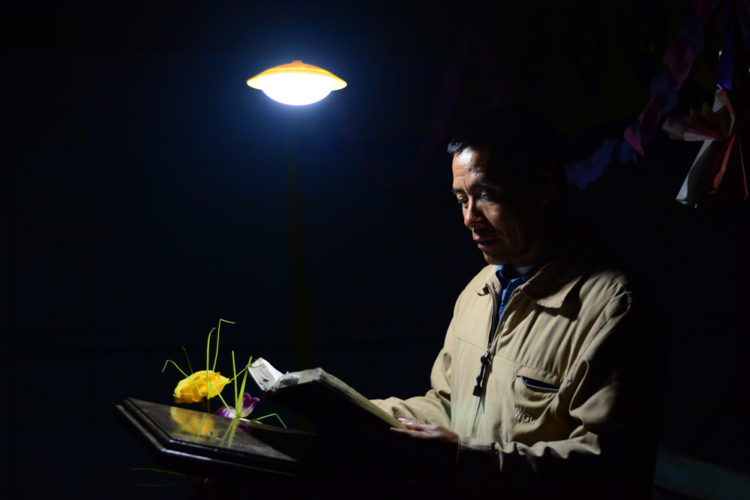
Dec. 28, 2016
Chichicastenango, Guatemala
It was the day after Christmas and the cold night air had yet to be chased away by the rising sun. There I was at 5:30 a.m. in front of our home in Chujupen while my family slept in their warm beds inside. I walked out the gate and met my three companions, Pastor Carlos, Pedro, and Melqui. We chatted as we loaded our bags into the van and headed north.
We were on our way to a tiny village tucked away in the Ixil Triangle — a mountainous region of the Quiche Department of Guatemala. This area was terrorized during the 1980s when the bloody civil war turned villages into burnt ashes, wives into widows, and children into orphans. Families here still vividly tell stories of those days of darkness and death.
We wanted to visit and encourage a family that lives in the village of Villa Hortensia La Antigua. I was excited to see our friends and to experience a part of Guatemala where I hadn’t visited before.
Our first stop was about two hours down highway NR15 on the banks of the River Chixoy– the town of Sacapulas. We found a tidy restaurant called Cafeteria Berta where we ate oatmeal, eggs, and coffee on the northern bank of the river. Then we piled back into the little Mitsubishi van and headed out of the broad river valley into the mountains.
The countryside was now awake and we saw women dressed in their regional skirts and traditional outfits walking through the communities as we zipped by. Just by looking at their dresses we could tell when we left the Sacapulas area and entered the region of Nebaj — our first point on the traditional Ixil triangle.
There we were joined by Domingo, our friend from the mountains. He had pretty much insisted on traveling the nearly hour and a half down the mountains just to meet us and help guide us up the mountains. We met him at the central park in Nebaj and drove about 20 minutes down National Route 3 to the town of San Juan Cotzal.
We parked near a soccer field and waited for the four-wheeled-drive pickup and driver we hired to take us up the mountain. Someone called him and he said he was “on his way” but in Guatemala that can mean anything from being just around the corner to just walking out the door to start driving to where we were waiting. As we waited, we met up with one of the most interesting men I’ve met in years–Pastor Franscisco Chamai.
After negotiating some details, we met with the driver and drove over to a local hotel that agreed to let us park the Mitsubishi in their garage for the night where it would be safer than on the street. Then we all piled into the 4×4 and sped off leaving the town behind.
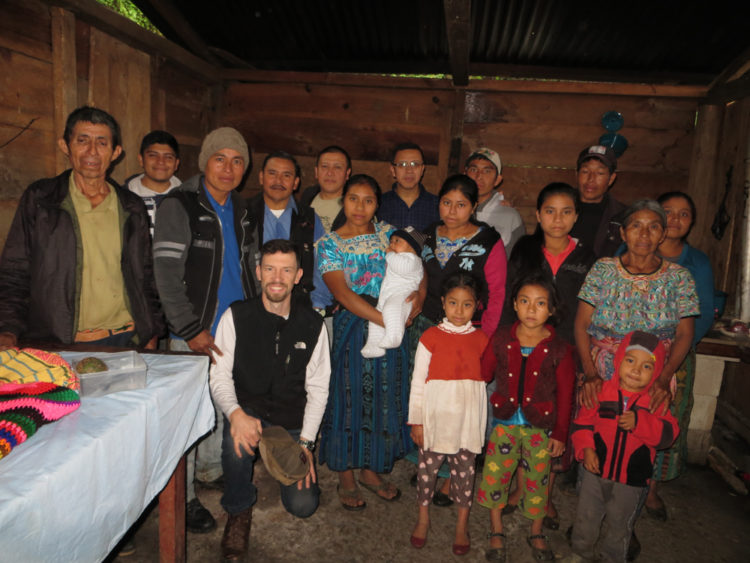
Soon we were on a gravel road winding our way into the mountains. About 40 minutes later we stopped at a checkpoint of the Finca San Francisco–a coffee plantation based in the last valley we had to cross before climbing the green mountains that nestle the tiny hamlet of Villa Hortensia.
We passed the worker housing at the finca where families and workers live while they cultivate and harvest the coffee that has made this area famous. Locals told us that these coffee workers make roughly less than $5 per day producing coffee that is exported to other countries.
After winding up the mountain a rocky trail, I was glad we hadn’t tried to make it with the Mitsubishi. Our driver and pickup delivered us to the muddy path that led to Domingo’s home.
Domingo’s family welcomed us like family and showed us to their own bedroom that they had cleared out for us. It was set with new plastic on the walls to keep the wind out and four beds set up for us. This family who don’t have a lot to give are some of the most giving people I’ve meet.
I quickly realized that the addition of Chamai was unexpected by the family. So I insisted on giving my bed to him. I found a straw mat and began to set up my sleeping bag there. Our host, Domingo wouldn’t allow that. About 30 minutes later, he showed up with another bed frame and soon we all had beds. I found out later that Domingo, his wife, and two small children were “camping out” in a plastic wrapped addition on the side of the room where we were going to spend the night. In this house that only had a kitchen and a bedroom, they gave us their own space to make their guests as comfortable possible.
After a delicious lunch at the kitchen table, we made our way down the gravel road to the church where we were scheduled to show part of a film of the Gospel story and share with the Christians there.
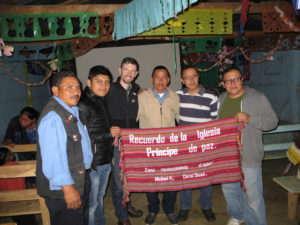
We met the pastor José and he shared his story about how he had been a leader in the local Catholic church until he began preaching against the honoring of images. That gained the ire of the priest and soon he was out of a home church. He joined the local evangelical church and eventually began to pastor another local church.
While utility poles stand at attention across Villa Hortensia complete with electrical lines, there is no connection to the electrical grid in the community. The evening church services are lit by candles, a car battery, and a generator…when they have gasoline to fuel it.
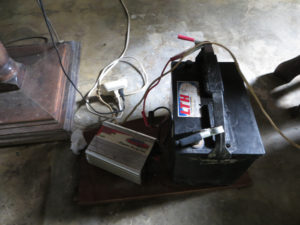
I brought with me a solar powered light and I offered it to Pastor José. He seemed very grateful as we installed the three lamps, the power box, and the solar panel on the roof. It was great to see his excitement as we opened the kit and began to install it.
At the end of the service we distributed clothes that we had collected to the various families and Melqui did a teaching for the youth…until a drenching rain began to fall.
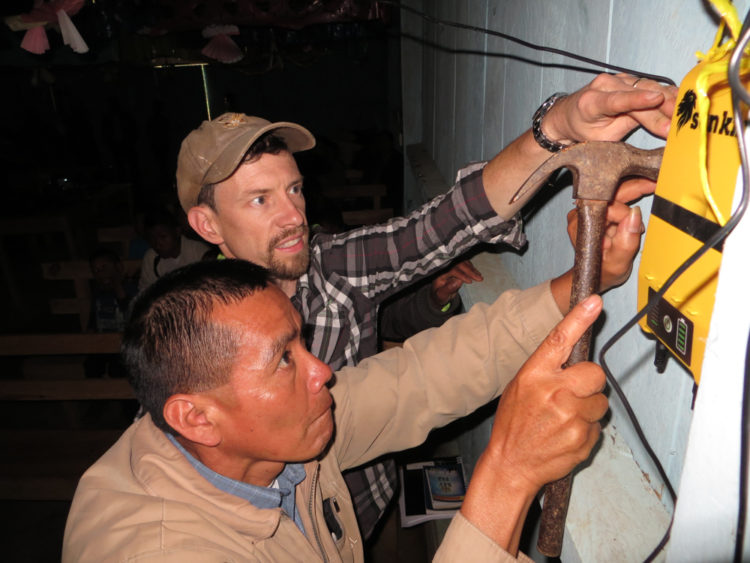
After supper we chatted with Domingo’s extended family. I enjoyed how they just spent time together enjoying the conversations and being together.
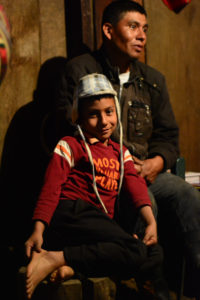 Domingo started a fire in the family tamascal a clay and stone sauna where one can bathe with water heated by a wood fire inside the small structure. I took my bath in the tamascal and found it refreshing and warmer than our shower back in Chichicastenango.
Domingo started a fire in the family tamascal a clay and stone sauna where one can bathe with water heated by a wood fire inside the small structure. I took my bath in the tamascal and found it refreshing and warmer than our shower back in Chichicastenango.
After chatting into the night, we made our way to our beds and slept to the sound of the running stream and rain on the tin roof.
The next morning we got up and walked with Domingo up to the next village to where a waterfall spills down the side of the mountain and under a small bridge. There was more time for us to share stories, visit the home of Domingo’s brother and parents and then it was lunch time and our ride showed up right on time.
As we headed back down the mountain road I realized that this trip took me out of my comfort zone of being a doer and helped me be more.
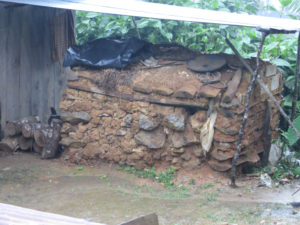
While I usually like to have a plan and make it happen, on this trip, I learned to slow down and enjoy the time shared with others. I found that sometimes ministry isn’t about doing something, but being something…a friend, a listening ear, an enjoyable conversationalist and an encourager who lets others know that they are not forgotten. I think that’s really why we went on this trip, to let Domingo and his family and the church friends there know that they are not forgotten.
I checked in with Domingo and he said the solar lamps at the church and in his home are working great. He said that pastor Jose is delighted to not have to try and fill the generator with gas since he has lights for the church now!
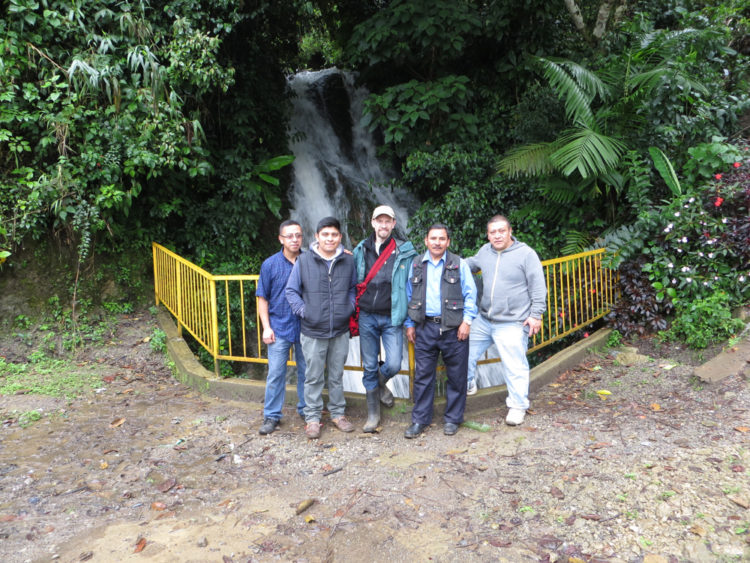
—————————
Your prayers and financial gifts help us continue reaching out to people like Domingo and his community and other ministries here in the highlands of Guatemala.
Give Here

Leave a Reply